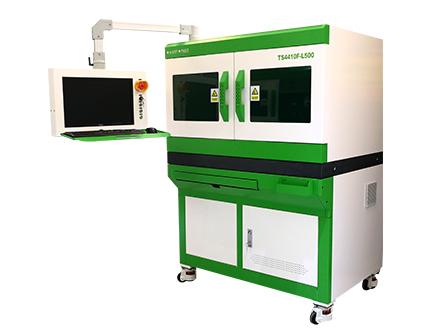In the evolving world of microelectronics, precision and performance are non-negotiable. That’s where the laser trimming machine becomes an essential tool, particularly when working with thin film and thick film resistor technologies. Whether you're dealing with a thin resistor on a ceramic substrate or a thick film application in power electronics, laser trimming ensures optimal circuit performance.
What is a Laser Trimming Machine?
A laser trimming machine is a high-precision device used to adjust the resistance value of electronic resistors, typically after they are manufactured. It uses a focused laser beam to selectively remove material from the resistor, thereby fine-tuning its resistance value to meet exact specifications.
Laser trimming is non-contact, clean, and incredibly accurate—making it ideal for thin film and thick film applications.
Thin Film vs. Thick Film: What's the Difference?
Understanding the difference between thin film and thick film resistors is crucial when choosing the right trimming technique:
-
Thin Film Resistors: Made by depositing a very thin layer (typically <1 µm) of resistive material onto a substrate. Known for high precision, stability, and tight tolerances.
-
Thick Film Resistors: Produced by screen-printing a thick paste onto a ceramic base, then firing it in a furnace. They are cost-effective and suitable for high-power applications.
Why is Laser Trimming Essential?
-
Thin film resistors require extremely fine trimming due to their precise resistance targets.
-
Thick film resistors benefit from laser trimming to achieve uniform resistance across high-volume production.
In both cases, a laser trimming machine ensures long-term performance and reliability.
Application of Laser Trimming on Thin Resistors
Thin resistors, especially in precision electronics like medical devices and sensors, must maintain tight tolerance levels. Traditional trimming methods like abrasive trimming cannot match the accuracy or speed of laser technology.
Benefits of laser trimming for thin resistors:
-
Real-time feedback and resistance monitoring
-
No mechanical stress on components
-
Higher throughput and automation compatibility
Integration in Modern Electronics Manufacturing
Laser trimming systems are widely integrated into automated production lines for hybrid circuits, sensor modules, and automotive electronics. Especially in thin film thick film hybrid circuits, selective trimming ensures functional consistency without damaging surrounding components.
Frequently Asked Questions (FAQ)
Q: What is the difference between thin film and thick film resistors?
A: Thin film resistors are made with a microscopically thin layer of resistive material and offer high precision. Thick film resistors use a thicker resistive paste and are better for cost-sensitive, high-power applications.
Q: Why is laser trimming used for resistors?
A: Laser trimming offers non-contact, highly precise adjustment of resistance values, ideal for fine-tuning thin and thick film resistors without causing heat damage or mechanical stress.
Q: Can one machine handle both thin film and thick film trimming?
A: Yes, advanced laser trimming machines are designed to handle both types with adjustable parameters to suit different film properties and resistor layouts.
Q: Is laser trimming better than abrasive trimming?
A: In most high-precision applications, yes. Laser trimming is cleaner, faster, and more accurate, with fewer mechanical side effects.
Final Thoughts
In the production of precise electronics, every ohm counts. Using a laser trimming machine for thin film and thick film resistor calibration not only improves product reliability but also boosts production efficiency. For industries where accuracy is critical—from aerospace to medical devices—laser trimming is no longer optional; it’s essential.

